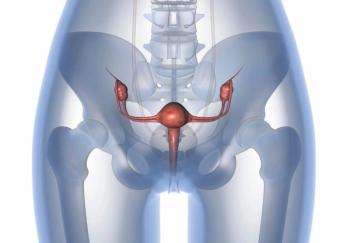
FDA Approves Expanded Olaparib Indication to Include Combination with Bevacizumab
The FDA expanded the indication of olaparib to include a combination regimen with bevacizumab for the first-line maintenance treatment of adult patients with advanced epithelial ovarian, fallopian tube, or primary peritoneal cancer.
The FDA expanded the indication of olaparib (Lynparza) to include a combination regimen with bevacizumab (Avastin) for the first-line maintenance treatment of adult patients with advanced epithelial ovarian, fallopian tube, or primary peritoneal cancer who are in complete or partial response to first-line platinum based chemotherapy and whose cancer is associated with homologous recombination deficiency positive status defined by either a deleterious or suspected deleterious BRCA mutation, and/or genetic instability.1
In addition, the FDA also approved the Myriad myChoice CDx as a companion diagnostic for olaparib.
Efficacy for this new indication of olaparib was investigated in PAOLA-1, a randomized, double-blind, placebo-controlled, multi-center trial designed to compare olaparib with bevacizumab versus placebo plus bevacizumab in patients with advanced high-grade epithelial ovarian cancer, fallopian tube, or primary peritoneal cancer following first-line platinum-based chemotherapy and bevacizumab.2
Randomization of the treatments were stratified based on first-line treatment outcome and tumor BRCA (tBRCAm) mutation status, determined by prospective local testing. Of note, all available clinical samples were retrospectively tested with the Myriad myChoice CDX test.
The trial participants were randomized 2:1 to receive either 300 mg oral olaparib twice daily in combination with 15 mg/kg bevacizumab every 3 weeks (n = 537) or placebo plus bevacizumab (n = 269). Patients continued bevacizumab in the maintenance setting and started olaparib after a minimum of 3 weeks and up to a maximum of 9 weeks after their last chemotherapy dose. Moreover, olaparib was continued for up to 2 years or until disease progression or unacceptable toxicity.
The primary efficacy outcome measure was investigator-assessed progression-free survival (PFS), evaluated according to RECIST 1.1. Secondary endpoints included PFS2, overall survival, and time until first subsequent therapy or death.
After a median follow-up of 22.9 months, the median PFS was 22.1 months with olaparib plus bevacizumab and 16.6 months with placebo plus bevacizumab (HR, 0.59; 95% CI, 0.49-0.71; P < 0.001). Estimated median PFS in the subgroup of 387 patients with homologous-recombination deficiency (HRD)-positive tumors was 37.2 months in the olaparib with bevacizumab arm and 17.7 months in the placebo plus bevacizumab arm (HR, 0.33; 95% CI, 0.25-0.45). Further, results from a blinded independent review of PFS were consistent with the investigator-assessed PFS analysis, though OS data were not mature.
Adverse events (AEs) were consistent with the previously established safety profiles of olaparib and bevacizumab. The most common AEs observed in patients given olaparib with bevacizumab treatment (≥10% of patients) were nausea, fatigue (including asthenia), anemia, lymphopenia, vomiting, diarrhea, neutropenia, leukopenia, urinary tract infection, and headache.
The FDA recommended a dose of 300 mg of olaparib taken orally twice daily, with or without food. When used in combination with olaparib, the FDA recommended a dose of 15 mg/kg of bevacizumab intravenously every 3 weeks.
Reference:
- FDA Approves Olaparib Plus Bevacizumab as Maintenance Treatment for Ovarian, Fallopian Tube, or Primary Peritoneal Cancers [news release]. AACR. Published May 8, 2020. Accessed May 8, 2020.
- Ray-Coquard I, Pautier P, Pignata S, et al. Olaparib plus Bevacizumab as First-Line Maintenance in Ovarian Cancer. N Engl J Med. doi:10.1056/NEJMoa1911361.
Newsletter
Stay up to date on recent advances in the multidisciplinary approach to cancer.


















































































